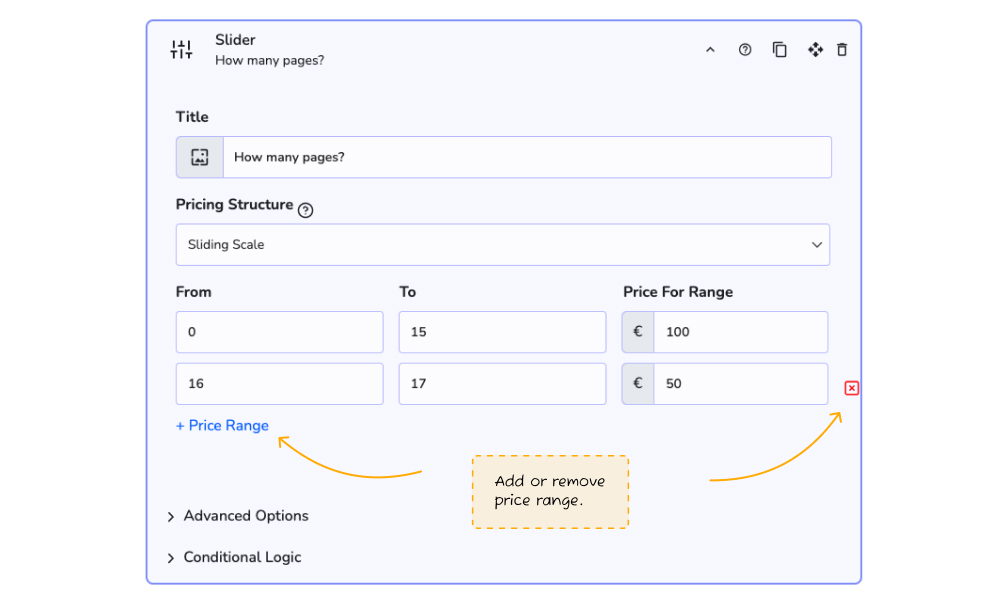Introduction
The Slider element has four different modes for pricing structure: default pricing, bulk quantity price breaks and sliding scale. This guide provides examples of how each mode can be implemented to effectively adjust pricing strategies based on quantity or scale, catering to different sales and marketing needs.

Benefits, Features & Use Cases
- Flexibility in Pricing: Allows businesses to adjust prices based on the quantity purchased, encouraging larger orders.
- Customer Attraction: Offers discounts that can attract price-sensitive customers.
- Increased Sales Volume: By incentivizing bulk purchases, businesses can move more inventory quickly.
How to Activate & Use This Feature
1. Default Pricing
For simple pricing.
Between 1 and 10 = $100 (per-unit price)
Example
4 Units = $400 (total price)
Activate This Setting

2. Bulk Pricing Discounts
Used to calculate and display discount pricing for products or services offered in bulk, such as business cards, tickets, food orders, or subscription-based services. It encourages users to purchase more items and increases sales by showing per-unit cost savings.
Between 1 and 5 = $50 (per-unit price)
Between 6 and 10 = $45 (per-unit price)
Between 11 and 20 = $45 (per-unit price)
Example
8 Units = $360 (total price)
Activate This Setting

3. Sliding Scale
Change a flat fee based on a range.
Between 1 and 10 = $100 (flat price)
Between 11 and 20 = $200 (flat price)
Between 21 and 30 = $300 (flat price)
Example
15 Units =$200 (total price)
Activate This Setting

4. Quantity Modifier
When you want a slider to modify the quantity selected of a dropdown, checkbox, image button or other element in the same subsection.


*Note: all pricing modes act as a quantity modifier. If you don't want this, place your slider in its own subsection.
General Notes Regarding the Slider Element
The slider will multiply the price of any element in the same subsection. It may best to add the slider on a separate subsection for your pricing.
The price has to follow an order. Example: 1 to 10 = $10 per unit. 11 to 20 = $9.5 per unit.
How to Switch Pricing Structure

How to Add the Pricing Ranges

Video Tutorial
Additional Information
All Elements & Features
Learn more about All Elements
Learn more about All Features
Need Support?
Ask a question or request support
Request a feature or give feedback
Was this article helpful?
That’s Great!
Thank you for your feedback
Sorry! We couldn't be helpful
Thank you for your feedback
Feedback sent
We appreciate your effort and will try to fix the article




